
cd_nom
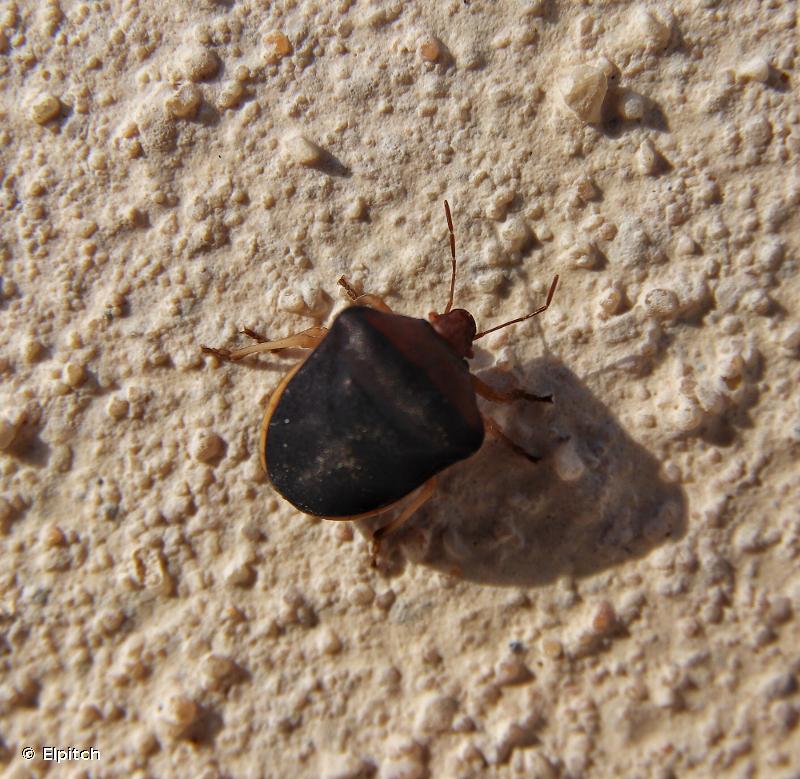
| Author : Elpitch |
 |
To get the picture, please visit:
Elpitch
email: inpn@mnhn.fr
Observation partagée via l'application INPN Espèces
Any reuse of one or more photographs on this site is subject to an authorization request from the author.
Link to the Code of Intellectual Property (Legifrance)
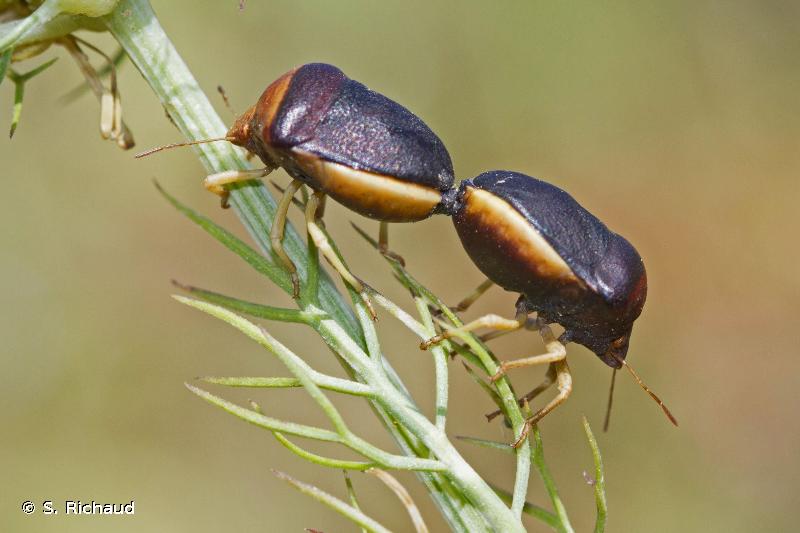
| Author : S. Richaud |
 |
To get the picture, please visit:
Sonia Richaud
email : inpn@mnhn.fr
Despite the Creative Commons license, please inform the author of the use which will be made of his photo
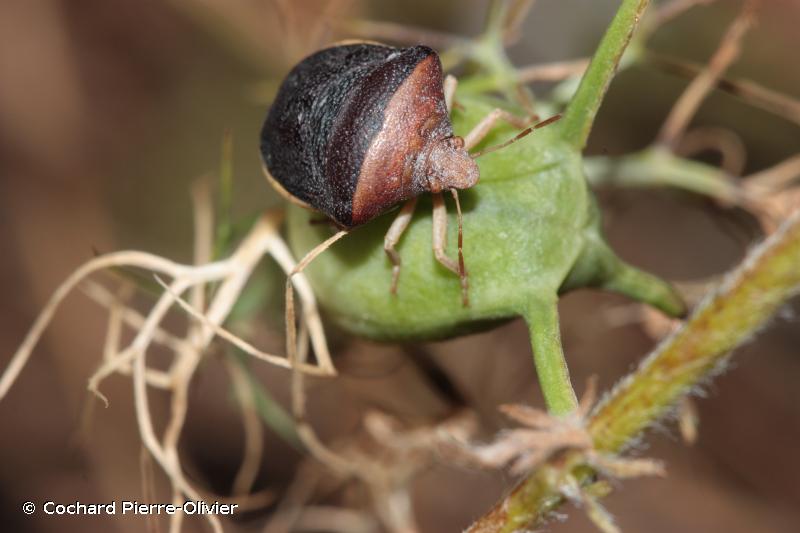
| Author : Cochard Pierre-Olivier |
 |
Despite the Creative Commons license, please inform the author of the use which will be made of his photo
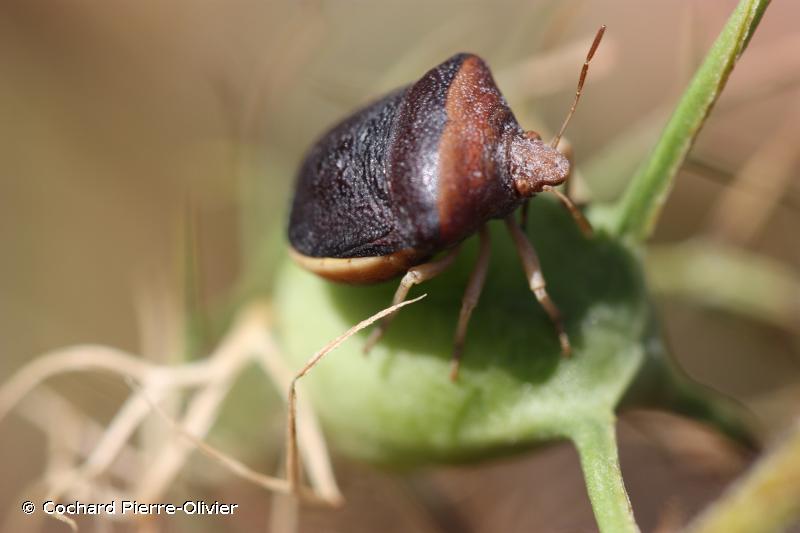
| Author : Cochard Pierre-Olivier |
 |
Despite the Creative Commons license, please inform the author of the use which will be made of his photo
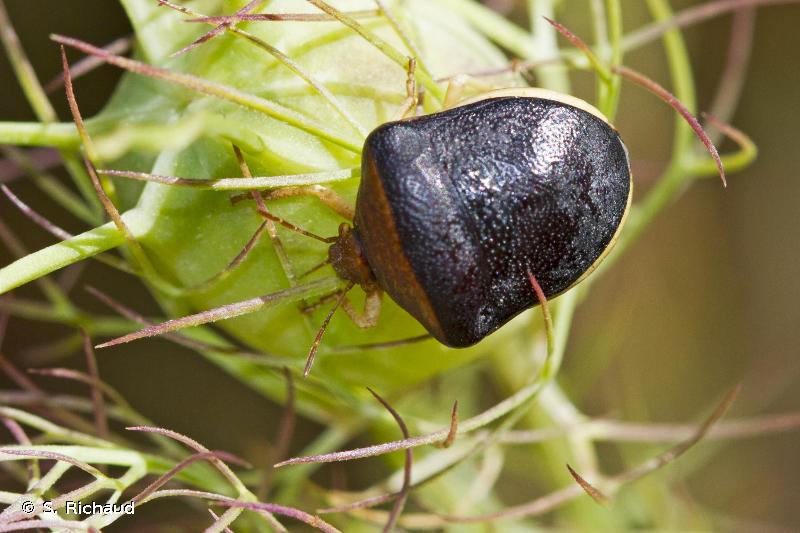
| Author : S. Richaud |
 |
To get the picture, please visit:
Sonia Richaud
email : inpn@mnhn.fr
Despite the Creative Commons license, please inform the author of the use which will be made of his photo
Taille : 7,7 – 9,7 mm
Diagnose :
Punaise arrondie et globuleuse, dont le scutellum recouvre entièrement l'abdomen, et atteint son extrémité. Sa tête, la partie antérieure du pronotum, les pattes et le ventre sont de couleur jaune d'or à brunâtre parfois en dégradé, et la moitié postérieure du pronotum et le scutellum sont marron foncé uniforme. Angles huméraux du pronotum arrondis et non saillants.
Détermination : Simple.
Espèces proches :
Cette espèce globuleuse a une teinte bicolore caractéristique qui la distingue de toutes les autres punaises. Cette coloration très contrastée jaune et brun lui vaut le surnom de punaise « tourteau fromager » !
Période d'observation :
Mai à septembre avec un pic principal en juin.
Biologie-éthologie :
Espèce monophage qui se nourrit en ponctionnant les fruits ou capsules, allant du vert au brun, des nigelles de Damas dans lesquelles se trouvent les graines.
Biogéographie et écologie :
Espèce à distribution européenne présente jusqu'en Turquie, mais absente en Ukraine. Elle se rencontre surtout dans l'aire méditerranéenne, toujours sur des sols calcaires où poussent les nigelles, de 0 à 860 m d'altitude, dans les lieux peu encombrés de végétation, chauds et secs : friches, terrains vagues, champs, bords des chemins et des cultures, remblais de constructions, jardins, broussailles, garrigues. Assez commune dans son aire de distribution, sa présence est liée au stade de maturité des fruits de nigelles. On l'observe dès que les fruits commencent à mûrir, et jusqu'à ce que la plante soit complètement sèche en fin de saison.
Roland Lupoli (),2020
Continental
Metropolitan France
Overseas
Marine
Metropolitan France
Overseas
The map presents a summary at the 10 x 10 km grid of the observation data for the species transmitted to the SINP. These data have been subjected to validation filters.
The map presents a reference distribution layer of the species at the scale of departments and marine sectors. The presence and absence data were established by expertise within a network of partners. This reference distribution is used in the validation process of the SINP data at the INPN level.
Corresponds to a report on the basis of at least one observation proved within a period of 10 years (20 years for little-known invertebrates) preceding the year and no presumption of extinction since obtaining the last data nor doubt on reproductive and implemented nature of this population. For migratory species, the presence indicated concerns areas of reproduction.
This status is based on one or more of the following criteria:
This point covers the absence, more difficult by nature to demonstrate than presence. This status is based on one or more of the following criteria:
This status must be assigned to a department in which the presence of the species is casual.
Particular case of absence due to a proven extinction less than a half century ago (older disappearances are treated as "no probable or definite").
In the state of knowledge, we can not comment on the presence or absence in the current department. This is the default status when not comprised in one of the previous categories or whenever there is doubt.
The map shows the global distribution of the species based on GBIF data (Global Biodiversity Information Facility).
